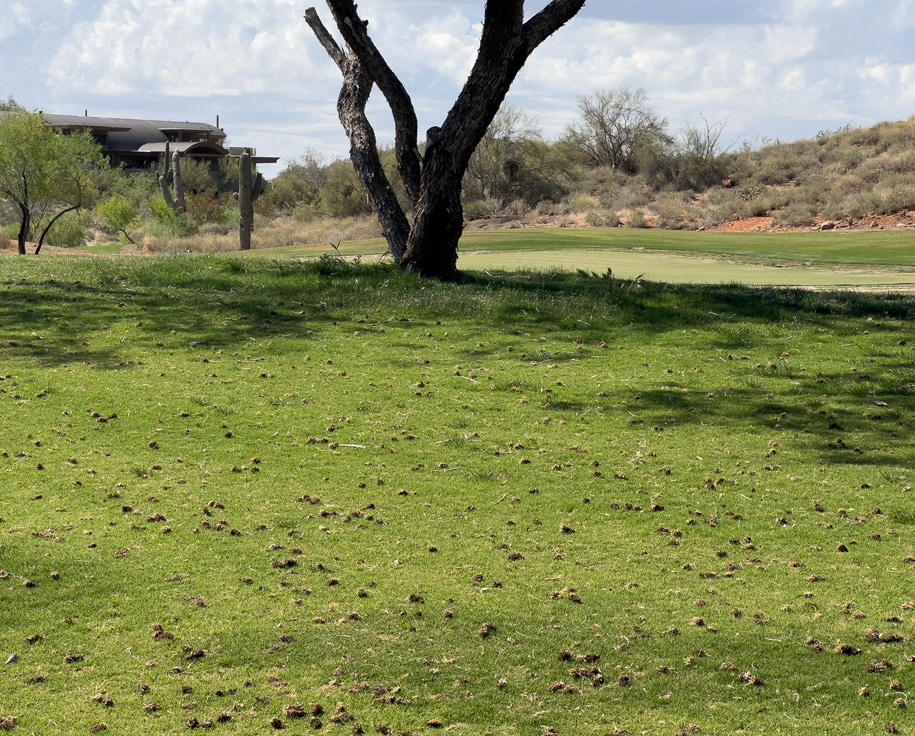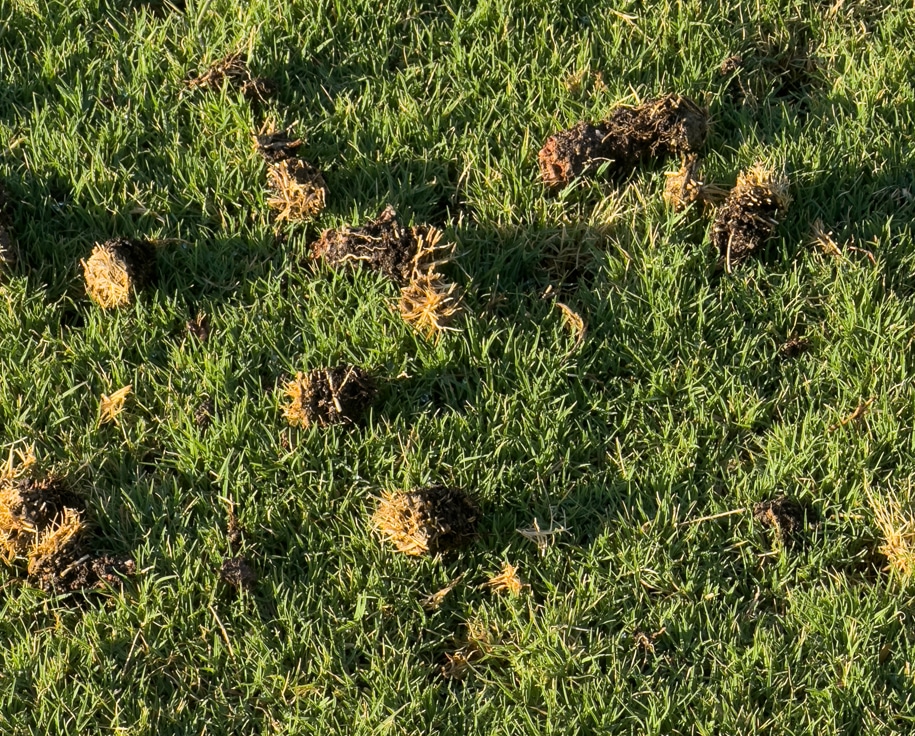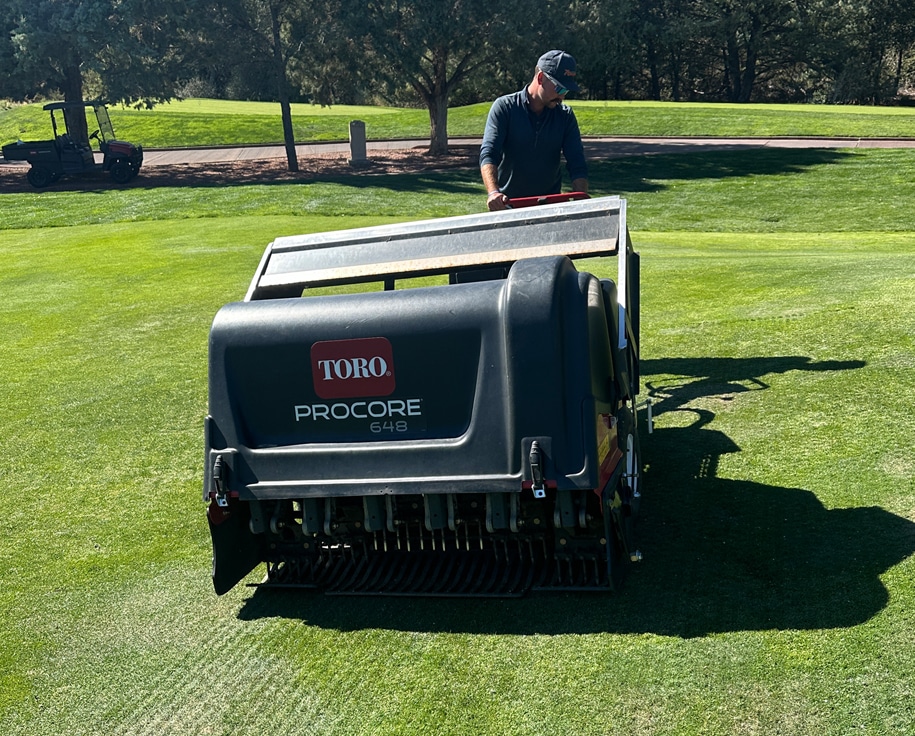What’s Aeration and Why is it Done on Golf Courses?

Planned on a round of golf but the course looks like Swiss cheese? What you’re seeing is the result of aeration — an essential and fundamental cultivation practice that results in a more resilient, vibrant and healthier turf.
When the soil beneath the surface has become compacted from heavy machine or foot traffic, the grass roots struggle to breathe. Putting greens in particular get more traffic than any other playing surface on the course. The aeration process helps relieve the compaction caused by all that traffic. It also helps create a firm, smooth putting surface by controlling thatch and promoting healthy turf roots.
So, what is aeration and what does it involve?
Aeration is a process by which holes are punched into the green to allow oxygen to reach into the soil beneath the green.
Aeration helps control organic matter such as decaying roots and grass stems found at the soil surface. If organic matter becomes too thick, it acts like a sponge, holding water at the surface after irrigation or rain. Excessive organic matter also reduces oxygen levels in the soil, fosters disease and creates soft surfaces and inconsistent playing conditions.
There are two primary aeration methods used on golf courses —core aeration and solid tine aeration.
Core aeration involves extracting small plugs of soil, usually .25” to .75” inch in diameter.

Solid tine aeration involves stabbing a hole in the ground with a solid tine, without removing any material. Also known as needle tining or venting, this is a quicker and less involved process than core aeration.

Both approaches allow for toxic gasses to be released, creating a healthy flow of air and moisture through the soil.
Superintendents will usually follow up aeration by topdressing the greens. Filling the holes with sand improves drainage, creates a smoother playing surface and speeds up recovery. Some courses may even add sand on tee boxes or fairways.
Core aeration is usually performed once or twice a year, whereas solid tine aeration can be beneficial throughout the year. Once a month is most common, but some courses may opt for twice a month during periods of high stress such as mid-summer
The type of grass can dictate timing for core aeration.
Cool-season grasses like Bentgrass, perennial ryegrass, Kentucky bluegrass or fescue are best aerated in early spring or late summer or early fall. Soil temps should be above 55F, ideally between 55-60.
Warm-season grasses like Bermuda, St. Augustine, and Zoysia are best aerated in late spring to early summer. Soil temps should be around 75F.
Aerating warm-season grasses while they are dormant can lead to weeds taking hold.
Generally, aeration is best done when grass is healthy and actively growing in order to minimize damage and expedite recovery.
Good news …you CAN play on a course that’s just been aerated, but you should expect slower greens and puts to roll inconsistently. It usually takes about 1-2 weeks before the greens fully recover from aeration.
>>>
Pro Tip: If your maintenance team accidentally runs over those cases during aeration, hit up SportsTurf Irrigation. We offer aftermarket or reconditioned cases for Rain Bird and Toro that provide huge cost-savings!








